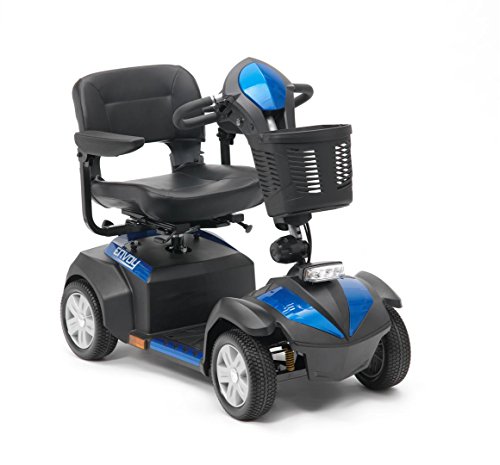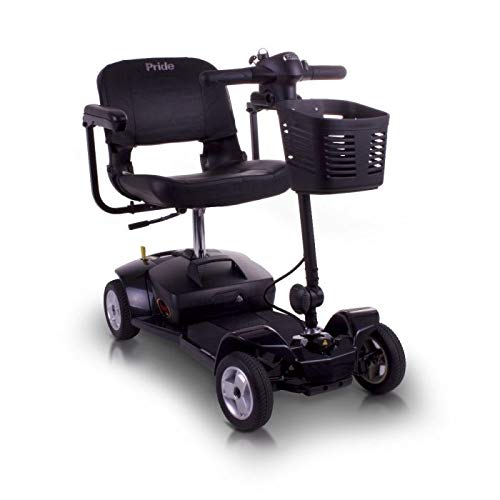 Using Mobility Scooters on Road Or Pavement
Using Mobility Scooters on Road Or Pavement No driving license is required to operate mobility scooters. However, users must be aware of their eye sight and the fact that they are travelling much slower than motor vehicles.
No driving license is required to operate mobility scooters. However, users must be aware of their eye sight and the fact that they are travelling much slower than motor vehicles.Check the manual for your scooter for the recommended height. Be careful when crossing roads and around corners.
Pavement or Road
As mobility scooters become more popular they have also evolved to cater for a wide variety of needs and abilities. This has meant that a greater number of people are choosing to purchase mobility scooters to help with their daily tasks and allow them to travel farther than their smaller Travel Scooters cannot manage.
Based on the location you live in There may be laws governing the use of mobility devices on roads and pavements. To ensure the safety of you, other road users, and pedestrians, it is essential to adhere to these rules. It is also recommended to think about obtaining mobility scooter insurance for extra peace of mind in the event that you experience an accident or a mechanical breakdown.
It is important to follow the Highway Code when using a mobility scooter on the road. This means giving way to pedestrians and not driving over them when possible, indicating before changing direction and using your lights and horn appropriately. It is also not recommended to drive your scooter in the cycle lane, bus bike lane, or any other designated bike lane. These are only suitable for bicycles. It is not advised to drive your mobility scooter on dual carriageways, as this can be dangerous for you and other motorists.
It is important to know that a mobility scoot is not the same as a motorbike, and it doesn't operate at the same speed. It is unable to keep up with traffic and should only travel at speeds of no more than 4 mph mobility scooter mph on the road.
Also, a mobility scooter is not a good idea to drive into shops or shopping malls since they are not specifically designed for them and could cause injury to you or other customers. Many shopping malls have an entrance that is separate for wheelchairs and scooters. This allows these customers to navigate the retail stores.
It is not mandatory to insure your scooter but it is highly recommended. This will provide you with peace of mind in the event of an accident or mechanical malfunction. You can pick plans that only cover the damage, or one that includes loss and repair coverage.
Sidewalk
While mobility scooters are intended to be used on roads but they should not be used on sidewalks or pedestrian paths. This is because mobility scooters are more wide than a bicycle, and they can create a challenge for pedestrians walking in the same direction. Pedestrians are also vulnerable to being hit by a mobility scooter, particularly if they are carrying bags or shopping items.
Sidewalks can also be difficult to navigate for mobility scooters because of obstacles such as garbage bins, benches curbs and plants. These obstacles can easily trip up or damage a scooter. This can lead to a loss of control, which can result in injury or even death for the driver and anyone else riding.
In general, there is no definitive answer to the question of whether mobility scooters can be operated on sidewalks. It is crucial to research local regulations and laws. Many jurisdictions categorize mobility scooters as personal assistive mobility devices and provide specific guidelines for their use, such as guidelines for sidewalk navigation and the requirements for equipment. Additionally it is suggested that scooter users wear helmets and adhere to all traffic laws while operating their mobility scooters.
It is also recommended that scooter owners avoid driving their vehicles through bike lanes or roads since they are not designed for these purposes. It is also important to be extra careful when going up and down kerbs since they can cause your scooter overturn. It is best to consult the manual for your scooter when you're not certain what to do with a fallen kerb.
Depending on your scooter's model depending on the model, you might be able to ride it in public buses that allow wheelchair access. You'll need a permit and to have completed the required training. You should also choose smaller scooters to shop on, as they are better suited for navigating the shops. It is recommended to adhere to the speed limits that shops set for pedestrians.
Pedestrian Areas
Many people are confused about where they can use their mobility scooters and the rules and regulations that govern responsible usage. This blog post will answer common questions regarding the use of these vehicles in public.
Most municipalities define scooters as wheelchairs, and their users as pedestrians. They can be used anywhere a person can, including walking paths and shopping malls. However there are exceptions to this rule and users must be familiar with local laws and guidelines.
It is important to be aware of the speed limit in pedestrian zones if you use scooters. Most regions limit the speed of scooters in pedestrian zones to a speed comparable to a leisurely stroll. This ensures the safety and comfort of other pedestrians.
It is also important to give pedestrians plenty of warning prior to making any move, or turning on the sidewalk, or in any other areas for pedestrians only. It is also a good idea to use hazard lighting when necessary to notify pedestrians of your presence, particularly when operating at a slower speed.
It is advised to avoid crossing roads on your scooter unless absolutely necessary in order to avoid being extremely dangerous. If you must cross a street on your scooter, it is best to do so at a pedestrian crossing or through an intersection that has proper signs. It is recommended to wear a helmet whenever feasible, particularly when riding on the streets or in areas with a lot of pedestrian traffic.
It is recommended to only use your scooter on sidewalks or other pedestrian-only areas once you feel comfortable operating it. Once you're comfortable with the basic driving skills of your vehicle, you should take a trip on the road. This is to prevent accidents and injuries resulting from inexperience with the controls or a misreading of your surroundings. It is also important to remember not to operate your mobility scooter when under the influence.
Crossings
Mobility scooters are a reliable and safe option for those with limited mobility that allows them to move around public spaces easily. It is important for users to understand the laws of their local area and exercise proper road and pavement manners when using their scooters. This includes adhering to speed limits and being careful not to impede other scooter users or pedestrians.
Mobility scooters can be used for driving on roads, but it is important to remember that they're not made for high-speed driving and cannot keep up with traffic. They also do not provide any protection against the elements, and may pose a threat to other drivers during bad weather. It is not recommended to drive an electric scooter without making sure that it has the necessary safety features and is registered with the appropriate authorities.
In addition to following the rules of the road and pavement mobility scooters with suspension, there are other factors that need to be taken into consideration when operating a motorbike safely. For instance, it's recommended to wear a helmet and use reflective gear when you ride your scooter. In addition, make sure your scooter has rear-view mirrors as well as an audible warning system, like a bell or horn, to help other road users and pedestrians recognize you.
Mobility scooter riders should be cautious when crossing the road. This includes checking both directions before proceeding, taking care around blind corners and avoiding distractions like mobile phone use or headphones. It is also recommended to use dropped kerbs where feasible as they can be beneficial for people who have difficulty with balance or mobility.
It's also an excellent idea to determine whether your area has bike lanes or bus lanes. It's a good idea when they're available, to make use of them. They offer an easier and safer way to travel through busy areas. It's best to avoid using your scooter on motorways, or in 'cycle-only' lanes, as they can be dangerous both for you and other road users.
